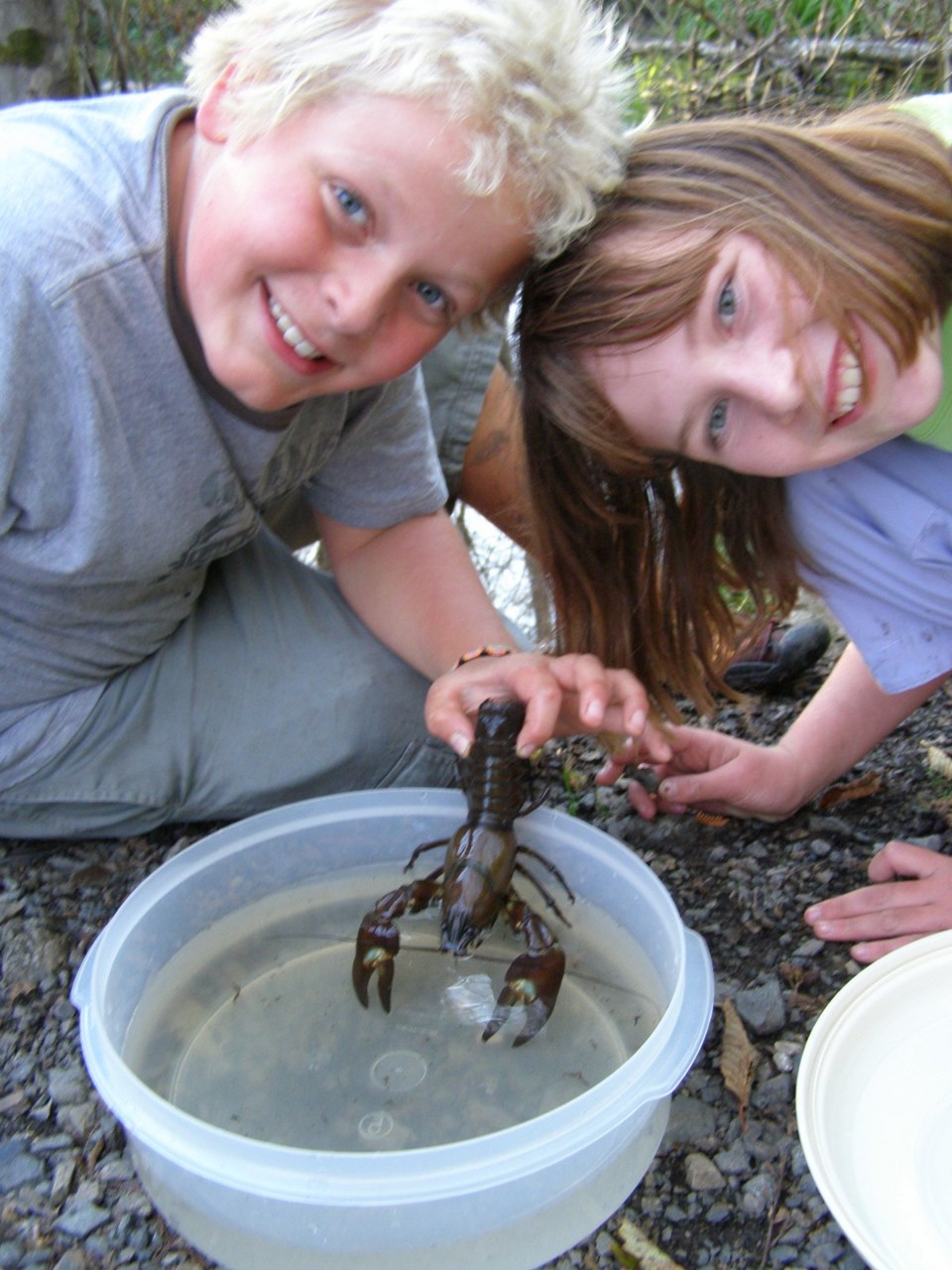Signal crayfish are one of Bowen Island’s many fascinating native species. They occur in Killarney Creek, the lower reaches of Terminal Creek, and possibly elsewhere. Native to western North America from the Pacific to the Rockies, their scientific name is Pacifastacus leniusculus.
Because of their impressive growth rate and large size, they were introduced several decades ago to the eastern and southern parts of this continent as well as the UK, mainland Europe, Scandinavia and Japan, where they were stocked in lakes and streams or raised commercially in ponds. In those regions, this species has displaced the local crayfish and, as a result, it is now considered an undesirable invasive species.
Found mainly in fresh waters, it is tolerant of brackish water and high temperatures. The largest seen on Bowen can reach total lengths of up to six inches (15 cm) not including the long antennae or the male’s large claws. When not feeding on the bottom, the signal crayfish lives under stones and in deep burrows dug into the soft banks. It can also travel overland between water bodies.
Each crayfish starts out as one of up to 500 sand grain-sized eggs laid in the fall, that then hatch in the spring and early summer of the following year. The young initially stay with the mother and gradually become more independent as they moult (shed their shell and grow a new one) over the summer. Although most don’t survive beyond age two, the oldest recorded signal crayfish lived to 16.
Seldom seen despite their large numbers, crayfish are important members of the food web. They feed on aquatic insects and other animals (including their own kind) as well as plant matter. In turn, they are important food for mink, river otter, heron, grebe, merganser and others. Although not aggressive to humans, they can cause a painful pinch if not handled with care.



